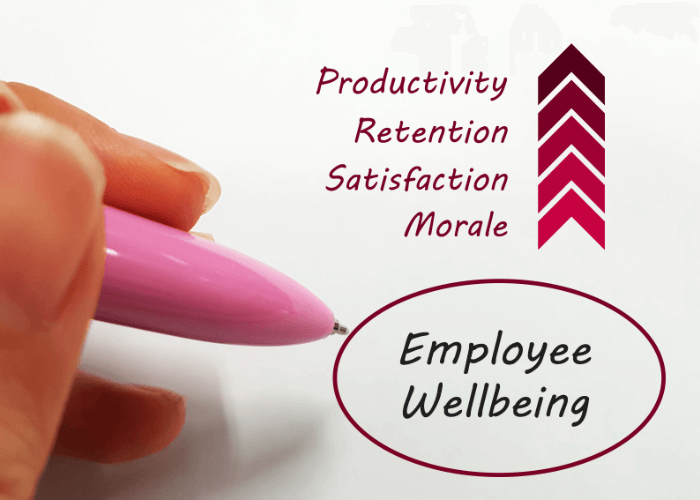Elevating Employee Well-being Through a Strong CSR Framework
The notion of employee well-being is gaining momentum in the workplace, and the reason is rather simple. Companies have just become increasingly aware of its massive influence on business success.
Organizations that put employee well-being at the apex of their priority list tend to enjoy multiple positive outcomes. They include – but are far from limited to – lower rates of absenteeism, higher levels of employee engagement, and an enhanced level of productivity.
Furthermore, prioritizing the well-being of employees can boost a company’s reputation, help attract top-notch talent, and construct a positive organizational culture.
This being said, a well-thought employee well-being policy is an inseparable part of every future-proof company vision. So how does it align with the overall Corporate Social Responsibility strategy, and what practical outcomes does it bring at the end of the day – we’re discussing in the paragraphs to follow.
Defining Corporate Social Responsibility (CSR) and Its Connection to Employee Well-being
Corporate Social Responsibility (CSR) is basically the company’s commitment to practices favorable for society and the environment. It includes multiple facets, such as sustainable business operations, ethical labor practices, and community engagement.
In recent years, CSR has also been closely intertwined with employee health and well-being.
By placing employee well-being initiatives at the forefront of their CSR strategy, companies are not only fulfilling their societal responsibility. They are also making a sound investment in the prosperity of their employees and, therefore, their own future profits.

The Matter of Employee Well-being and Its Influence on Company Success
Employees who are healthy, engaged, and motivated are more likely to be productive, innovative, and committed to the company’s mission. Additionally, companies prioritizing employee well-being can drastically reduce healthcare costs and absenteeism while, in the meantime, improving their retention rates.
We can mention two noteworthy facts and stats published by the Happiness Business School to translate theory into practice. They point out that happy employees are 20% more productive, helping their employees outperform the competition by a matching 20%.
In contrast, companies that do not target employee mental health as a priority may face some not-so-positive offshoots on their bottom line. Employees who are stressed, overworked, or struggling with job-related burnout may have higher rates of absenteeism, lower productivity, and poorer job satisfaction.
These issues can lead to high turnover rates, increased healthcare costs, and some truly challenging times in employee retention in the future.
So, investing in the contentment of your teams doesn’t look like such a far shot for your business growth after all, does it?
How To Improve Employee Well-being: Best Practices
Developing a robust CSR framework that bolsters employee well-being requires a blend of policies, initiatives, and general culture.
A few best practices for accomplishing this include:
- Place mental health and wellness at the forefront. Providing mental health resources, such as employee assistance programs, can help employees cope with anxiety at work and enhance their overall feeling of fulfillment.
- Provide flexible working arrangements. Supplying flexible work hours, remote work, or hybrid timetables can aid employees in juggling their personal and professional lives, curbing stress, and elevating job satisfaction.
- Cultivate a positive workplace environment. Encouraging teamwork, celebrating employee accomplishments, and endorsing work-life balance can build a positive workplace culture that brings success in the long run.
- Invest in employee development. Тraining programs, mentorship, and a clearly defined career path can foster employee loyalty, engagement, and job satisfaction.
Long story short – if your teams feel respected, appreciated, and taken care of, you can expect smooth collaboration and fruitful mutual efforts.

The Benefits of Investing in Employee Well-being as Part of a CSR Strategy
Investing in employee-centered initiatives is not only the right thing to do from an ethical standpoint. It also makes good business sense.
A physically and mentally thriving workforce delivers more and delivers it of their own free will. This means that you, as an employer, won’t have to put too much pressure on your teams or too much effort on righting their wrongs – merely because their wrongs will decrease smoothly and naturally.
When employees feel valued and supported, they are likelier to go above and beyond in their work without perceiving this as a chore or a burden.
From a financial point of view, ensuring employee well-being can lead to lower healthcare costs for the business. Fewer medical interventions and sick leaves mean a more structured and predictable workforce and, therefore, better consistency for you as an employer.
Some other benefits of monitoring and enhancing employee well-being include:
- Enhanced creativity and innovation;
- Better relationships with customers and stakeholders;
- Reduced conflicts and tensions in the workplace;
- Reduced turnover and recruitment costs;
- Higher quality of work output;
- Improved customer satisfaction;
- Better adaptability to change;
- Better organizational resilience;
- Reduced stress and burnout among employees;
- Lower risk of employee lawsuits and legal disputes;
- Greater diversity and inclusion in the workplace, etc.
Measuring the Effectiveness of CSR Initiatives on Employee Well-being
Estimating the significance of different CSR initiatives for employee physical and mental health is critical to ensuring you invest your resources wisely.
While there are various ways to measure the impact of CSR on employee well-being, one effective method is through employee surveys and feedback.
Employee surveys can help pinpoint areas of improvement and provide insights into how employees perceive the company’s initiatives. For example, surveys can ask workers about their job satisfaction, stress levels, and work-life balance. By collecting this data, companies can identify areas where they can improve their CSR initiatives and patterns that bring tangible results.
Another way to measure the impact of CSR on employee well-being is through employee turnover rates. High employee turnover can signify dissatisfaction, stress, or burnout. By tracking turnover rates and comparing them to previous years, you can gauge the effectiveness of your CSR initiatives and make adjustments as needed.
Some other metrics you can use for the purpose include, for example, the following:
- Employee engagement rates;
- Absenteeism and sick leave rates compared to the industry average;
- Health insurance claims and healthcare costs;
- Employee morale and self-initiative levels;
- Employee participation in CSR initiatives;
- Time to fill job vacancies and recruitment cost per hire;
- Performance on sales targets or project deadlines, etc.
Finally, the impact on the company’s bottom line and financial performance will always be the stamp telling you that your strategy has succeeded.

